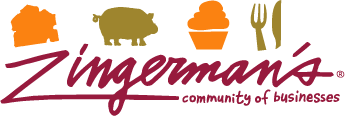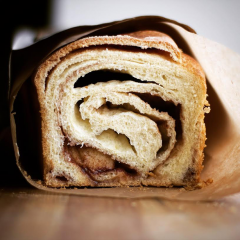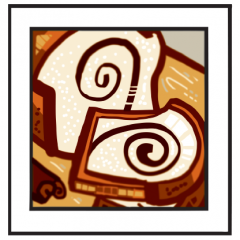
Special bake at Zingerman’s Bakehouse, Somodi Kalács
Hungarian Cinnamon Swirl Bread from the Bakehouse One of the best things I’ve gleaned from working with the organizational ecosystem metaphor over the last few years is the reminder that everything impacts everything else. Which, in turn, I’ve been reminded of again by the arrival in the ZCoB of the Vermont Creamery Cultured Butter (now available […]
Read more »


Zingerman’s Art for Sale